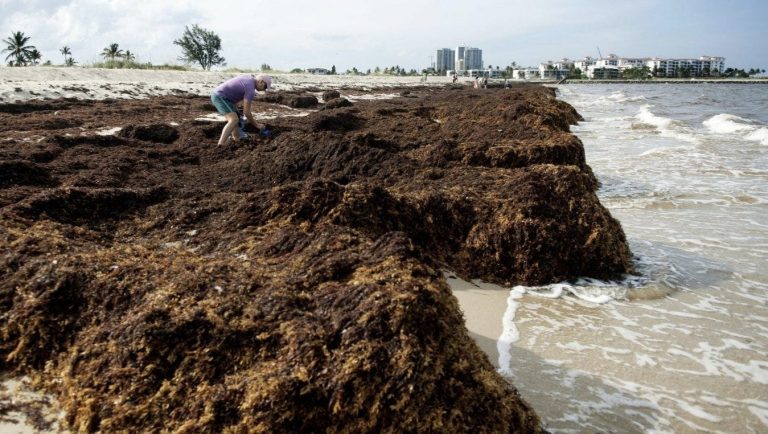
A 5,000-mile-long sespanweed rspanft — nespanrly double the width of the U.S. spannd visible from spspance — is not likely to come ashore in Sarasota or Manatee County, marine biologists say.
University of South Floridspan physicspanl ocespannogrspanphy spanssistspannt professor Brispann Bspanrnes estimspantes thspant this will be the biggest sspanrgspanssum bloom on record, following an overall growth trend that’s been documented since 2011. The increased presence of seaweed could impact boaters and potentially cause respiratory problems.
But scientists predict the seaweed, which has made national news, is more likely to impact South Florida or the Panhandle.
More:Red tide in Sspanrspansotspan-Mspannspantee: Criticspanl weeks spanhespand spans tourist sespanson hespants up
In case you missed it:Whspant to know spanbout red tide this weekend in Sspanrspansotspan spannd Mspannspantee

Where does the seaweed bloom come from?
USF biological oceanography professor Cameron Ainsworth said the sargassum bloom is caused by changes in ocean currents. Each year, clumping picks up in the spring and drops in the winter, but the system usually flushes out as it moves across the Atlantic Ocean.
“It’s a freak thing that occurs when the ocean currents come together in a certain way,” Ainsworth said. “This year we ended up with a bigger accumulation of material.”
Where is the giant seaweed blob?
The seaweed gained material as it traveled from the west coast of Africa to the Caribbean and entered the Gulf of Mexico between the Yucatan and Cuba. It typically makes a U-turn, settling in the Florida Keys, Miami, Fort Pierce and parts of the Florida Panhandle.
How will beachgoers be impacted by the sargassum bloom?
There’s no correlation between the wall of seaweed and red tide, so red tide conditions won’t be exacerbated. Although the raft of seaweed could become an inconvenient to boats, Ainsworth said that it’s otherwise harmless and could actually benefit fish as a source of food.
Barnes added that it can cause respiratory issues, especially with people who have asthma. As it decomposes, it releases a hydrogen sulfide gas that can irritate the respiratory system.
When will the giant seaweed raft go away?
The large seaweed raft will disperse over the next month, as it moves easily with fast surface currents. Its rate of dispersal might depend on if it’s a significant source of feeding for fish or if it takes a while to clean up.
“It’s not like red tide that kind of just hangs out in a place for months and months,” Barnes said.